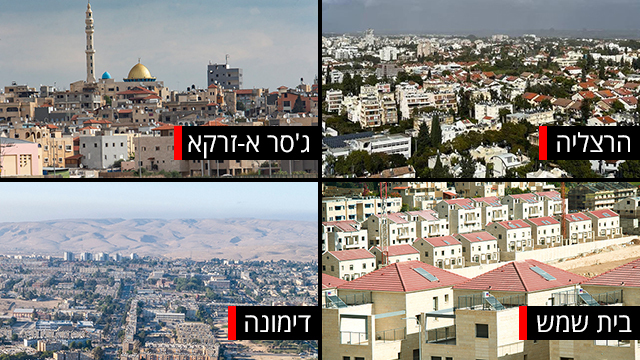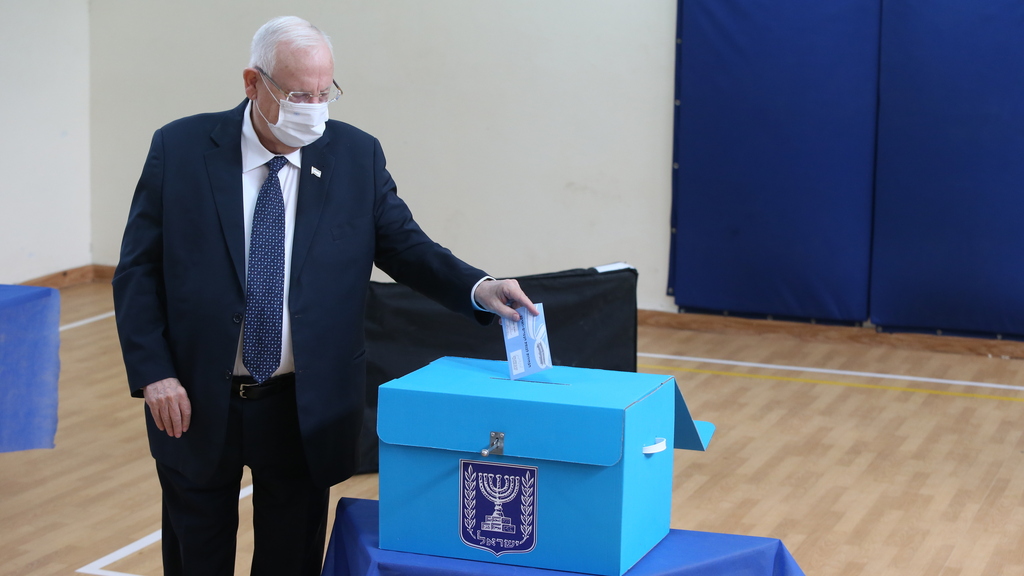
Voters across the country
(Photo: Lehi Krupnik, Barel Ephraim, Ido Erez, Shamir Elbaz)
The final results of the 2021 election continue to flow, and as politicians try to create scenarios for forming coalitions and avoiding further elections, the final results are revealed in many localities and cities. Most of them were given the majority of votes to the Likud – but according to the current situation, this is not a number that can provide Benjamin Netanyahu with an hourly government.
8 View the gallery


(Photo: Gil Nehushtan, Jorge Novomoisky, Danny Roop, shutterstock)
In Even Yehuda, the final turnout was 74.5%. The party that won the most votes there was Atid with 29.4% of all votes in the locality, followed by the Likud with 18.9%, Blue and White with 12.5%, Labor with 11.7%, Meretz with 8.2%, New Hope with 6.3% and the right with 4.4%.
In Ofakim, the turnout was 61%, which was distributed as follows: the Likud 32.6%, Shas 22.9%, Torah Judaism 16.4%, Yisrael Beiteinu 6%, religious Zionism 6%, right 5%, Yesh Atid 3.6%.
The residents of Or Yehuda recorded a voter turnout of 66.8%, and the party that won the most votes there was the Likud with 47.9%. Followed by: Shas 16.6%, Yesh Atid 7.7%, New Hope 5.6%, Blue and White 5.9%, Right 5.1%, Religious Zionism 3.4%.
In Eilat, where the mayor ran on a new list of hope for the Knesset, no change was recorded. In this election, too, the Likud received the most votes – 42.2%. After it: Yesh Atid 13.5%, New Hope 7.5%, Yisrael Beiteinu 7.4%, Blue and White 6%, Right 5.3%, Shas 5.2%, Labor 4%, Religious Zionism 3.4%. The turnout in the southern city was 41.3%.
8 View the gallery


Voting in Eilat. The turnout is relatively low
(Photo: Meir Ohayon)
The city with the ultra-Orthodox majority Elad, where the highest voter turnout was recorded with 81%, gave the most votes to Shas, which won 47.9% of the vote. It is followed by Torah Judaism 35.3%, religious Zionism 10.7%, the Likud 4.2%.
In Beit She’an, where 65.2% of eligible voters voted, the Likud again won the most votes with 54.6%. Shas won 21.1% of the vote, religious Zionism 7.8%, the right 4.9% and Gideon Saar’s New Hope won 3.2%.

Baqa al-Gharbiya had a turnout of 31.3%. The joint list won 57.1%, RAAM 34.2% and Meretz 4.4%. Jasr a-Zarqa and Jat also had low turnout – with 24.5% and 26.6%, respectively. In the two localities, the joint list won. For the majority of the votes, followed by Ra’am, however, in Jisr a-Zarqa, 5.5% voted for the Likud, while in Jat, 4.9% voted for Meretz.
8 View the gallery


Voices also in Jisr a-Zarqa. Netanyahu
(Photo: Reuters)
No surprises were recorded in Beit Shemesh or Beitar Illit either. In the cities with the ultra-Orthodox majority, Torah Judaism and Shas were the parties that received the most votes, respectively. In Beitar Illit, the turnout was 77.3%, and religious Zionism won 10% of the vote. In Beit Shemesh, the turnout was 61.6%. , Religious Zionism by 10.4% and right by 6.4%.

Givat Shmuel, where the voter turnout was 74.6%, went right. 24.1% of the voters gave their vote to Naftali Bennett’s party, and in second and third place are the Likud and Religious Zionism. Yesh Atid won 11.8% and Blue and White won 6.4%.
In Givatayim, the turnout was 69.3%, and the party that won the most votes there had a future with 26.7%. Labor came in second with 15.2%, followed by the Likud with 15.1%, followed by Blue and White, Meretz, Tikva Hadasha, Yemina and Yisrael Beiteinu.
8 View the gallery


Took most of the votes in Herzliya and Hod Hasharon. torch
(Photo: Tal Shahar)
The city of Dimona also went with the Likud, in the best tradition. The turnout there was 56.3%, and out of all the votes, more than half went to Benjamin Netanyahu’s party. Shas came in second place, followed by Yisrael Beiteinu, Yesh Atid, religious Zionism, the right and new hope.
In Herzliya and Hod Hasharon, no surprises were recorded in relation to the previous election campaigns. First place has a future, followed by the Likud, blue and white and Labor. In Zichron Yaacov, the residence of Yifat Shasha Bitton of New Hope, there was no widespread support for the Yishuv’s representative in the Knesset. Yesh Atid won 24.8% there, the Likud 15.2% and Blue and White 10.5%. New Hope won 6.4% of the vote there. The turnout there was 71.9%.
Voting rates in Yavne, Yehud and Yokneam Illit were also fairly close to the general voting rate. The Likud won the majority of votes there, followed by a future. In Yokneam Illit, Yisrael Beiteinu came in third, while in Yehud it was blue and white and in Yavne it was Shas. In Kfar Yona, the Likud was also given the most votes. In Netivot, Shas was the party that won the most votes – 39.6%, followed by the Likud. Yisrael Beiteinu won 4.1% there.
According to the results, which are not final for the time being, in Haifa, in contrast to the previous elections, they gave the most votes to the Likud. In the 23rd Knesset elections, it was the United Blue and White that won 34.6% of the vote, but this time the Likud won 21.4% in the northern port city, while Yesh Atid followed with 19.5%, Yisrael Beiteinu 9.4%, Blue and White 8.1%, the joint list 7.2 Labor, 6.8%, Meretz 6.3%, New Hope 5.4%, Right 4.8% and Torah Judaism 3.7%.
8 View the gallery


Torah Judaism in the head, the Likud after. Jerusalem
(Photo: shutterstock)
There was no surprise in Jerusalem and Torah Judaism was the one that received the most votes (23.6%), followed by the Likud with 20.7%, 15.9% for Shas, 9.3% for religious Zionism, 6.7% for the right, 5.5% for Yesh Atid, 3.9% for Labor, 3.6% for Meretz , 3.4% for new hope and 3.3% for blue and white.
In Tel Aviv, also according to infinite data, Yesh Atid won 22% of the vote. It is followed by the Likud with 17.1%, Labor with 14.7%, Meretz with 13.9%, Blue and White with 10.7%, New Hope with 4.2%, Shas with 3.7%, right with a similar turnout and Yisrael Beiteinu with 3.6%.
8 View the gallery


Counting the votes in the Central Election Commission
(Photo: Rafi Ben Hakon, GPO)
The counting of the double envelopes in the Central Election Commission will probably only begin later, with the publication of a count of 100% of the regular ballot papers. At present there is still no exact number of duplicate envelopes, so it is difficult to estimate how many votes will be worth a seat. The expected amount of double envelopes is 450-400 thousand.
The Election Commission updated at noon that “the process of typing the details of the double envelopes began for the purpose of editing a special file that is compared with a file of the voter register, to check whether a double vote was taken. “Voting in a double envelope), the voice in the double envelope will be rejected”.
President Reuven Rivlin has decided to postpone consultations at the President’s House ahead of the imposition of the government train until after Pesach – Monday, April 5, close to the opening of the evidentiary phase of the Netanyahu trial.
The president wants to impose the government train on the one with the highest chances, and it can be assumed that the postponement after Pesach will require the representatives of the parties to reach the president in solidarity. Although he could have started consultations as early as Wednesday, with the official results, he decided to give the party leaders more time – and require them to answer all the scenarios – not only who the figure they recommend, but also with whom they would agree to sit and with whom not.
8 View the gallery


President Rivlin votes. Will again have to give the mandate to form a government
(Photo: Amit Shabi)
To prevent allegations against the president as heard in the past about conspiracies and conspiracies, the entire consultation process will be open to the media live and completely transparent. In fact, this will be the first time this year that the President’s House will be opened to journalists. The president must impose the government train on one of the candidates within seven days of receiving the results – that is, until April 7. The Knesset member who receives the mandate from the President will have 28 days to form the government.
The president can extend the period, at the request of the candidate, by an additional 14 days. If he does not announce that he has succeeded in forming a government, announces that he does not succeed or that the Knesset has rejected the government he has formed – the mandate returns to the President’s House. At this stage, the president has two options, which he must choose within three days: to impose the government train on another Knesset member who has agreed to accept the job of government train, or to inform the Knesset speaker that he does not see the possibility of forming a government.
8 View the gallery


If the president gives the mandate to another MK, the candidate will have 28 days to form a government, without extensions. In a situation where the president informs the speaker that he does not see a candidate who can form a government, or that the other candidate failed to form a government, the mandate passes to the Knesset. For 21 days, 61 Knesset members can ask the President in writing to assign the position to a Knesset member of their choice, provided he has agreed to it.
If such a request is indeed submitted, the President of the State must impose the formation of the Government on the same candidate, who will have at his disposal 14 days for the formation of the Government, without extensions. If no application is submitted by a majority of the Knesset members, or the same candidate has not been able to form a government – the Knesset will dissolve and Israel will go to a fifth election in less than two and a half years.

